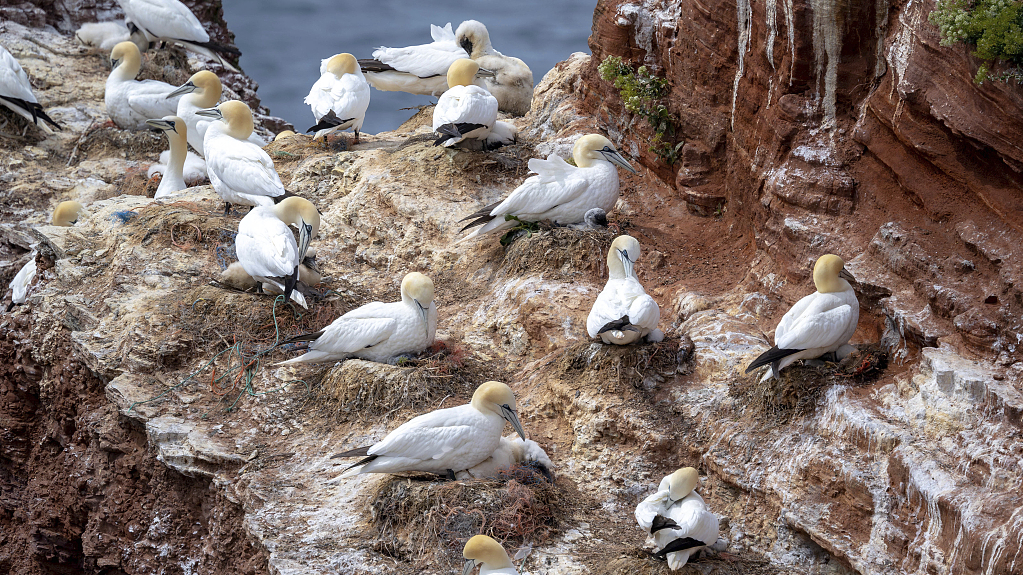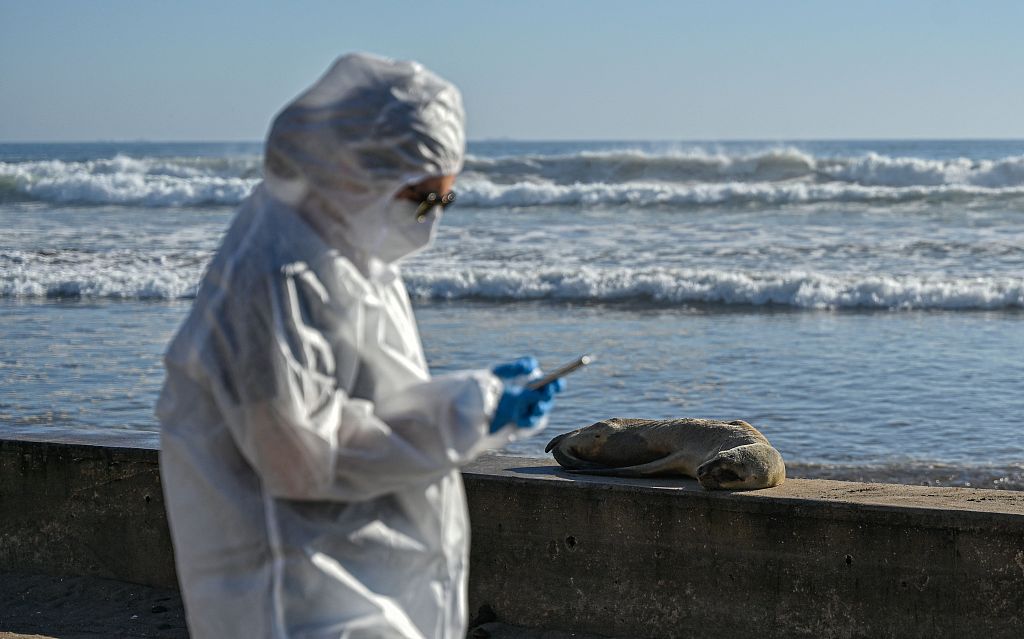Ongoing outbreaks of bird flu have caused devastation to animal populations, and may now infect humans more easily, according to a joint release on Wednesday by three United Nations (UN) organizations.
Poultry, wild birds and some mammals have been affected by the outbreaks, and farmers' livelihoods and the food trade damaged, the organizations said.
In their situation analysis and advice on the outbreaks of avian influenza, the Food and Agriculture Organization (FAO) of the UN, the World Health Organization (WHO) and the World Organization for Animal Health (WOAH) urged countries to work together across sectors to save as many animals as possible, and to protect people.

Gannets breed on the deep-sea island of Helgoland in Germany. The avian influenza raging on Helgoland now also affects the gannet habitats. /CFP
Gannets breed on the deep-sea island of Helgoland in Germany. The avian influenza raging on Helgoland now also affects the gannet habitats. /CFP
Avian influenza viruses normally spread among birds, but the increasing number of H5N1 avian influenza viruses detected in mammals has raised concerns that the virus might adapt and infect humans more easily. In addition, some mammals may act as mixing vessels for influenza viruses, leading to the emergence of new viruses that could be more harmful to animals and humans, said the release.
According to the WOAH, in 2022 the organization received reports of outbreaks of H5N1 high pathogenicity avian influenza in poultry and wild birds from 67 countries on five continents, with more than 131 million domestic poultry lost due to death or culling in affected farms and villages. In 2023, another 14 countries have reported outbreaks, mainly in the Americas, as the disease continues to spread. Several mass death events have been reported in wild birds, caused by influenza A (H5N1) clade 2.3.4.4b viruses.
In addition, deadly outbreaks among mammals were also caused by influenza A (H5) - including influenza A(H5N1) - viruses. At least 26 species of land and sea mammals are affected, including Spanish farmed mink, seals in the United States of America, and sea lions in Peru and Chile. H5N1 viruses have also been detected in domestic animals such as cats and dogs in several countries, with recent detections of H5N1 in cats announced by authorities in Poland.

Employees of the National Fisheries and Aquaculture Service (Sernapesca) attempt to control a sea lion at a beach in La Serena, Chile on May 31, 2023 while bird flu had killed almost 9,000 local marine animals this year. /CFP
Employees of the National Fisheries and Aquaculture Service (Sernapesca) attempt to control a sea lion at a beach in La Serena, Chile on May 31, 2023 while bird flu had killed almost 9,000 local marine animals this year. /CFP
"There is a recent paradigm change in the ecology and epidemiology of avian influenza which has heightened global concern as the disease spread to new geographical regions and caused unusual wild bird die-off, and an alarming rise in mammalian cases," said Gregorio Torres, Head of the Science Department at WOAH.
The joint news release also noted that eight cases of sporadic influenza A (H5N1) clade 2.3.4.4b virus detection in humans have been reported since December 2021, mostly linked to close contact with infected birds and contaminated environments. Infection in humans can cause severe disease, with a high mortality rate.
"With the information available so far, the virus does not appear to be able to transmit from one person to another easily, but vigilance is needed to identify any evolution in the virus that can change that," said Sylvie Briand, Director of Epidemic and Pandemic Preparedness and Prevention for the WHO.
FAO, WHO and WHO urged countries to take action to curb the spread of avian influenza, including preventing bird flu at its source, and rapidly detecting, reporting and responding to animal outbreaks.
(If you have specific expertise and want to contribute, or if you have a topic of interest that you'd like to share with us, please email us at nature@cgtn.com.)
Source(s): Xinhua News Agency